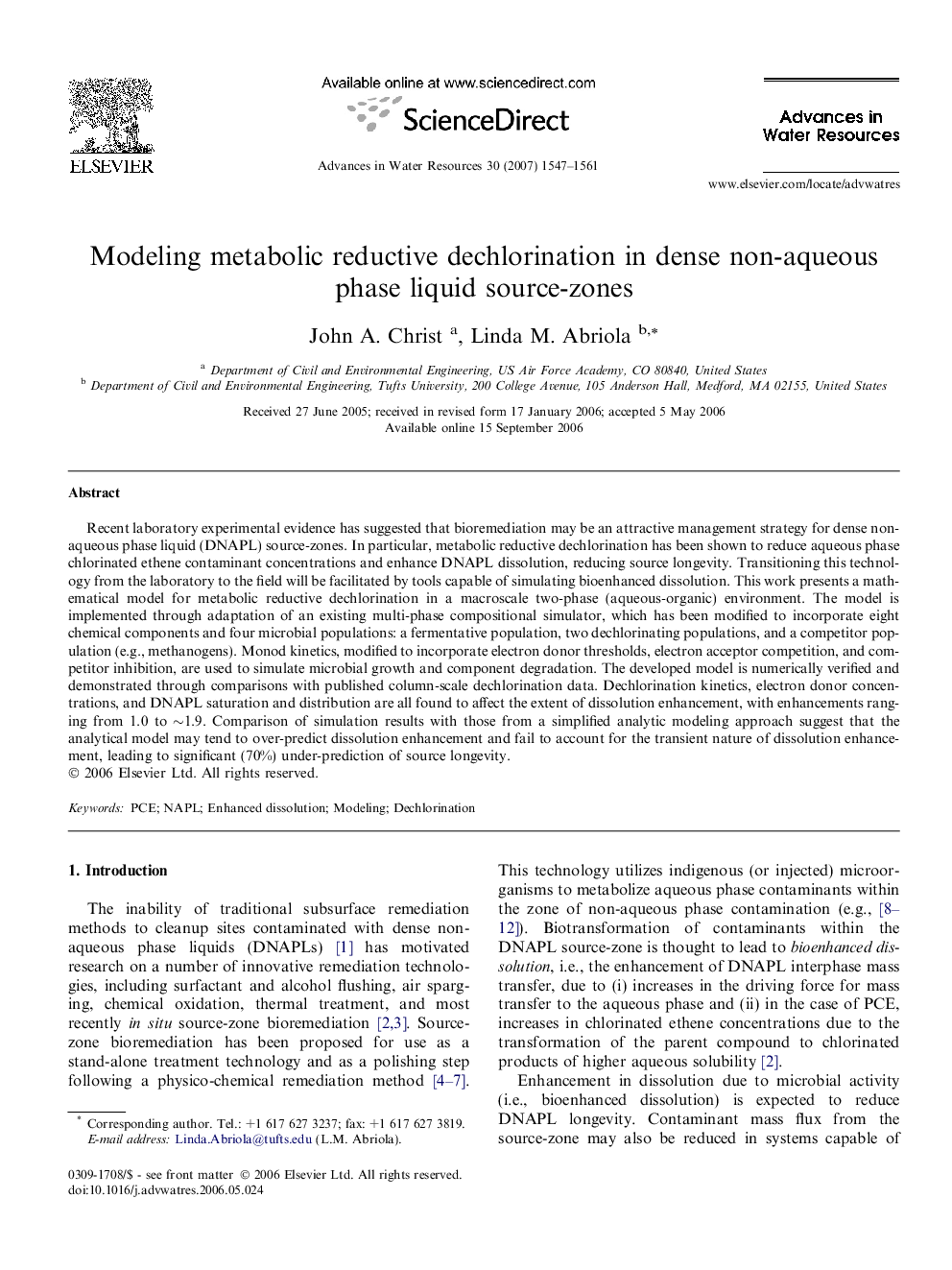| Article ID | Journal | Published Year | Pages | File Type |
|---|---|---|---|---|
| 4526892 | Advances in Water Resources | 2007 | 15 Pages |
Recent laboratory experimental evidence has suggested that bioremediation may be an attractive management strategy for dense non-aqueous phase liquid (DNAPL) source-zones. In particular, metabolic reductive dechlorination has been shown to reduce aqueous phase chlorinated ethene contaminant concentrations and enhance DNAPL dissolution, reducing source longevity. Transitioning this technology from the laboratory to the field will be facilitated by tools capable of simulating bioenhanced dissolution. This work presents a mathematical model for metabolic reductive dechlorination in a macroscale two-phase (aqueous-organic) environment. The model is implemented through adaptation of an existing multi-phase compositional simulator, which has been modified to incorporate eight chemical components and four microbial populations: a fermentative population, two dechlorinating populations, and a competitor population (e.g., methanogens). Monod kinetics, modified to incorporate electron donor thresholds, electron acceptor competition, and competitor inhibition, are used to simulate microbial growth and component degradation. The developed model is numerically verified and demonstrated through comparisons with published column-scale dechlorination data. Dechlorination kinetics, electron donor concentrations, and DNAPL saturation and distribution are all found to affect the extent of dissolution enhancement, with enhancements ranging from 1.0 to ∼1.9. Comparison of simulation results with those from a simplified analytic modeling approach suggest that the analytical model may tend to over-predict dissolution enhancement and fail to account for the transient nature of dissolution enhancement, leading to significant (70%) under-prediction of source longevity.
